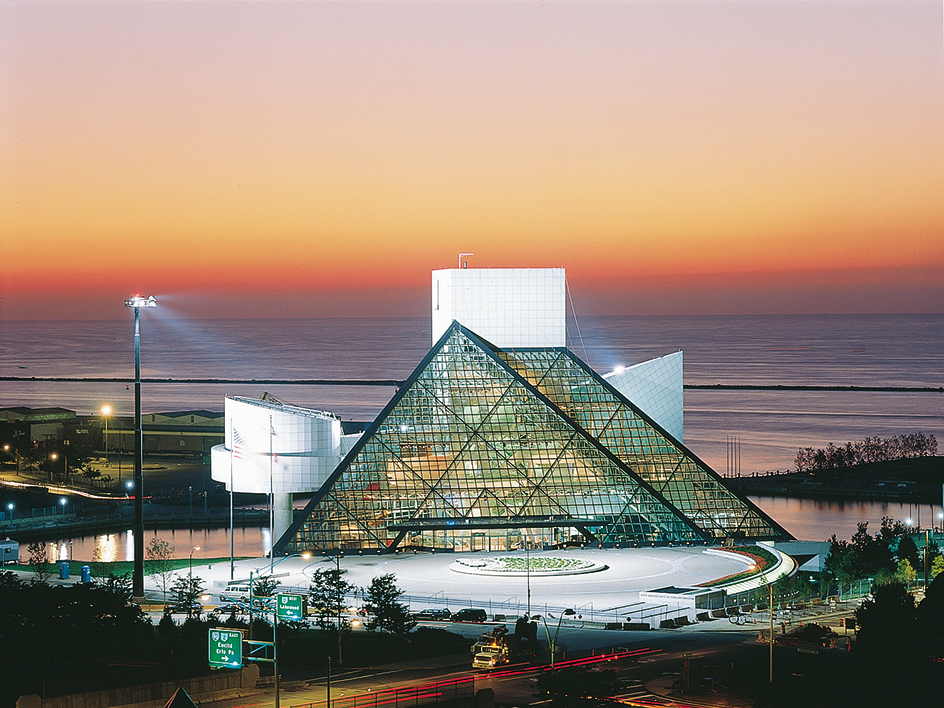Rock music is the leading type of popular music in much of the world. Rock music exploded on the music scene in the United States during the mid-1950’s. During its early history, it was called rock ‘n’ roll (also spelled rock and roll).
Much early rock was a rebellious style of music that particularly attracted young people who wanted an alternative to the musical tastes of the adult world. The creators of rock music were pioneers who turned away from the conventions of the music business, searching for a new sound. By the mid-1960’s, however, rock dominated the music industry, and it remains one of the most important divisions of popular music.
Beginnings of rock music
Musical roots.
Rock music originated primarily as a blend of two American musical styles—(1) country and western music and (2) blues. There were also some elements of gospel music, particularly in the style that became known as “soul music” in the 1960’s.
Loading the player...Guitar manufacturing
Much of the musical vocabulary of rock ‘n’ roll appears in recordings made during the 1930’s by African American blues singers, such as Son House, Robert Johnson, and Charley Patton. At the same time, the Carter Family and Jimmie Rodgers were making the first country music recordings, which provided another vital influence on rock.
By the late 1940’s, a fast-paced blues style with an aggressive, driving beat emerged through recordings released by independent American record companies. This music, which was aimed primarily at a black audience, was known as rhythm and blues. Roy Brown recorded “Good Rockin’ Tonight” (1947), and Wynonie Harris recorded “All She Wants to Do Is Rock” (1949), two rhythm and blues standards that helped shape rock ‘n’ roll. Big Joe Turner introduced the song “Shake, Rattle and Roll” (1954), which became a standard among rock music performers.
Cleveland disc jockey Alan Freed is often credited with introducing the term rock ‘n’ roll as part of his radio show in the early 1950’s. In black slang, the phrase had a sexual meaning, but Freed used it to describe the high-energy rhythm and blues he played on his program. The term soon became the name for the new music.
Loading the player...
Rock music: Early rock 'n' roll (Johnny Too Bad)
Early rock ‘n’ roll caused considerable controversy. Many people objected to the loud volume of the music and its often rebellious or sexually suggestive lyrics and performing style. Some opponents of rock claimed that the music was corrupting young people.
Major record labels, such as Columbia and RCA Victor, ignored rock ‘n’ roll and focused on mainstream popular music during the early 1950’s. Most of the musical developments that led to rock emerged from independent record companies, such as Atlantic, Chess, King, Specialty, and Sun.
Sun Records.
In 1950, a radio announcer named Sam Phillips opened a recording studio in Memphis. The next year, his studio produced a song that many rock historians consider the first rock ‘n’ roll record. It was a song about an Oldsmobile, “Rocket ‘88” (1951) by Jackie Brenston with Ike Turner’s band. Phillips sold the recording to Chess Records in Chicago.
After “Rocket ‘88” became a success for Chess, Phillips established his own label, Sun Records, to market his recordings. He recorded African American performers at first but sought a white singer with the sound and feeling of a black artist. With such a performer, Phillips believed, he could appeal to a large white audience and make a fortune.
Elvis Presley.
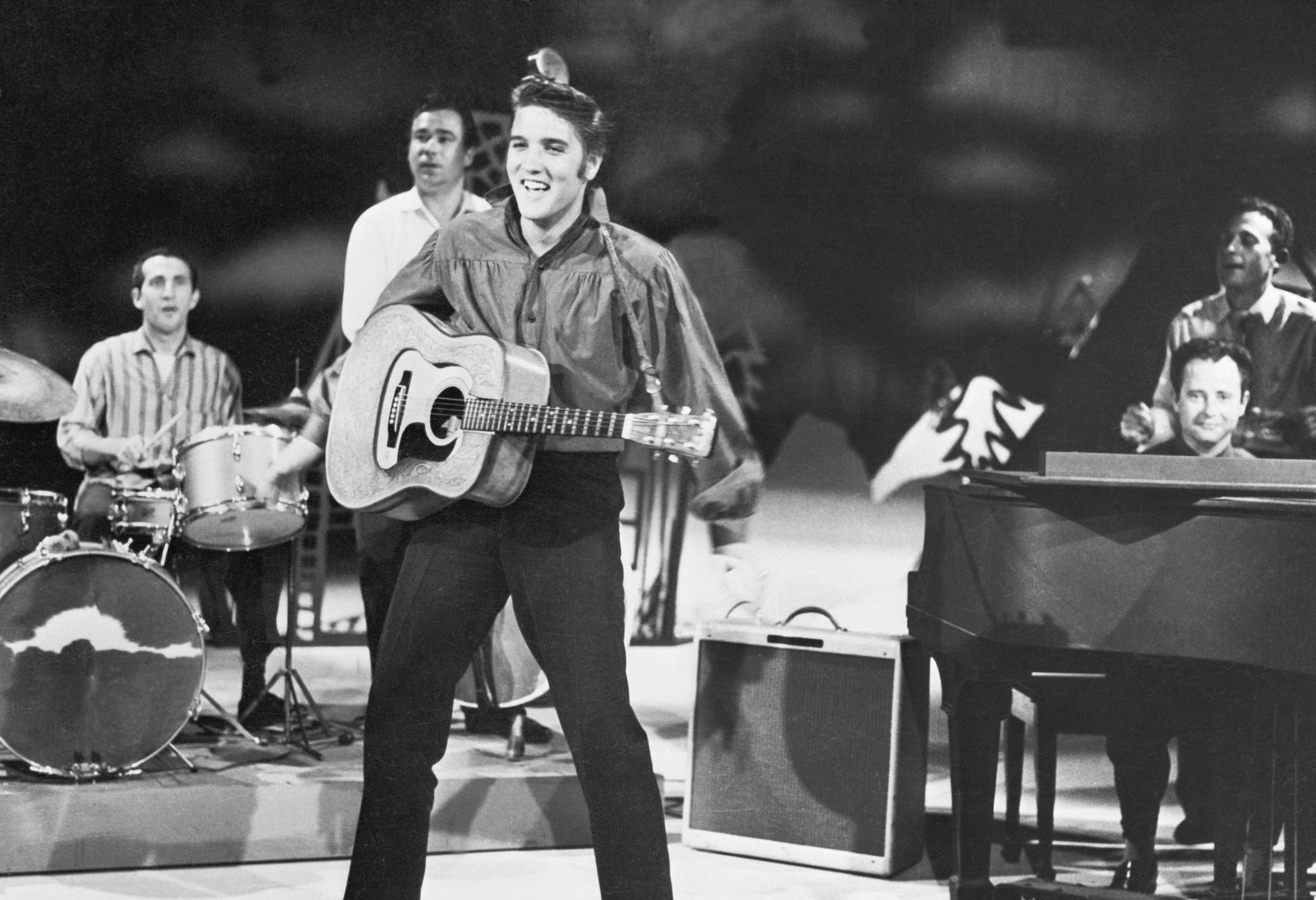
Presley spent 18 months making innovative recordings for Sam Phillips at Sun. Then RCA bought Presley’s contract in 1955 for $35,000, a remarkable sum at the time. Phillips needed the money to record his other discoveries—Johnny Cash, Jerry Lee Lewis, Roy Orbison, Carl Perkins, and Charlie Rich. They all went on to distinguished careers in rock or country music. With “Blue Suede Shoes,” Perkins became the first artist to simultaneously have a top hit on the country and western, rhythm and blues, and pop charts.
Presley went on to earn mass success with his first RCA recordings, “Heartbreak Hotel” and “Don’t Be Cruel” (both 1956), which led the music business to demand more songs in this new style. By the end of 1956, Presley had become a national phenomenon and established himself as rock music’s greatest star.
Rock ‘n’ roll gains popularity
Rock ‘n’ roll gained in popularity during the middle and late 1950’s. The first generation of rock ‘n’ roll artists emerged, and several different styles developed. Independent record producers played an important role in spreading the music and creating new sounds.
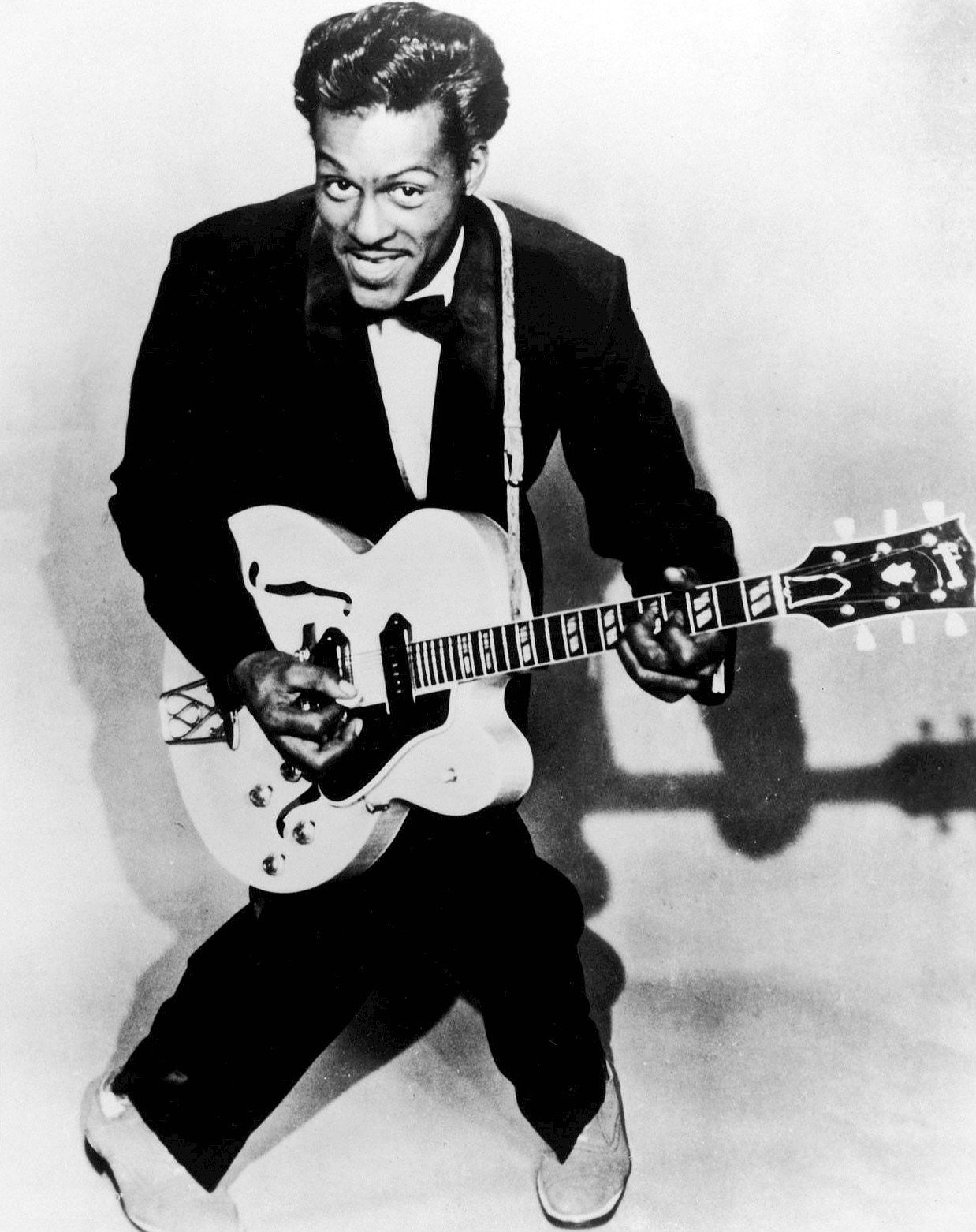
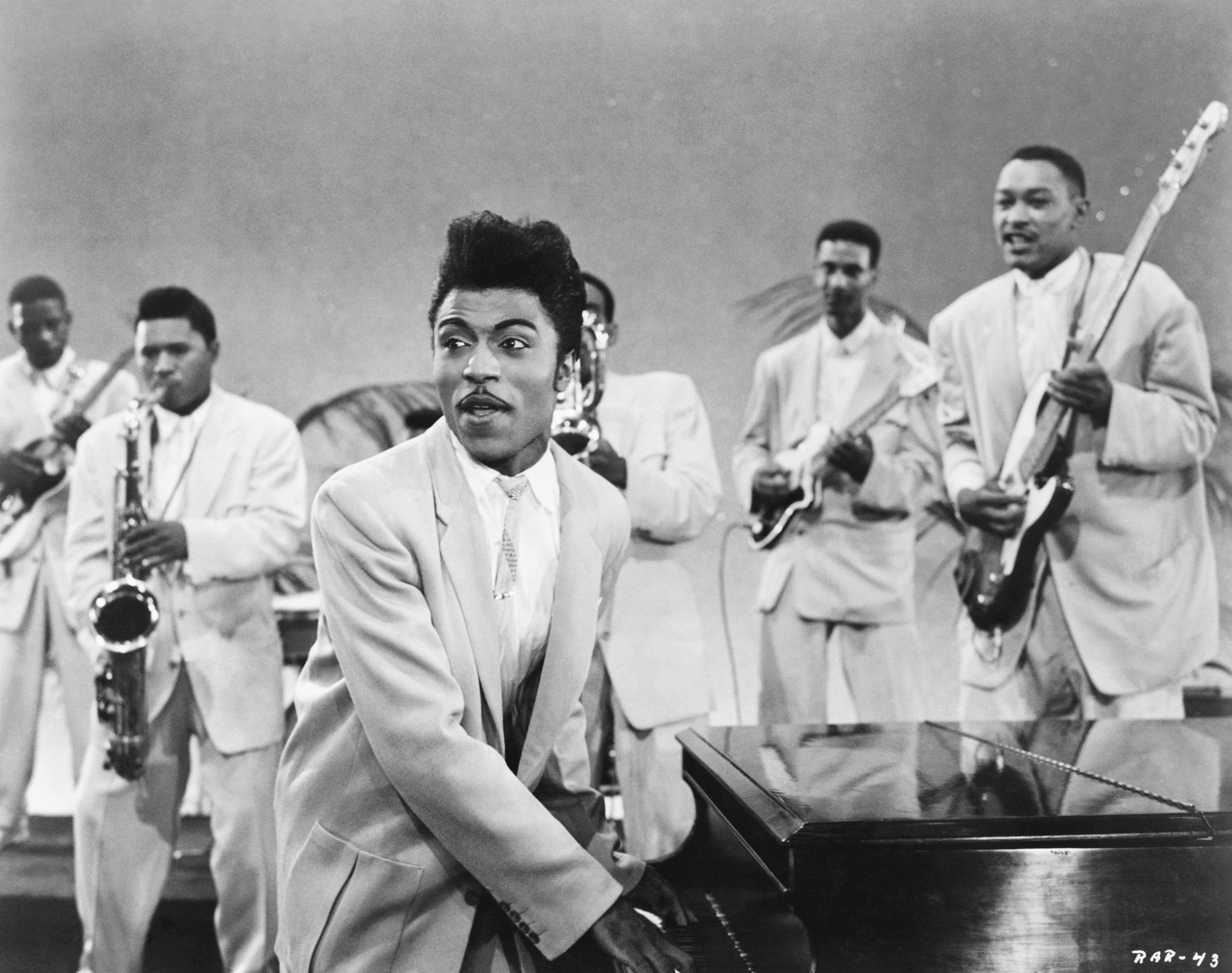
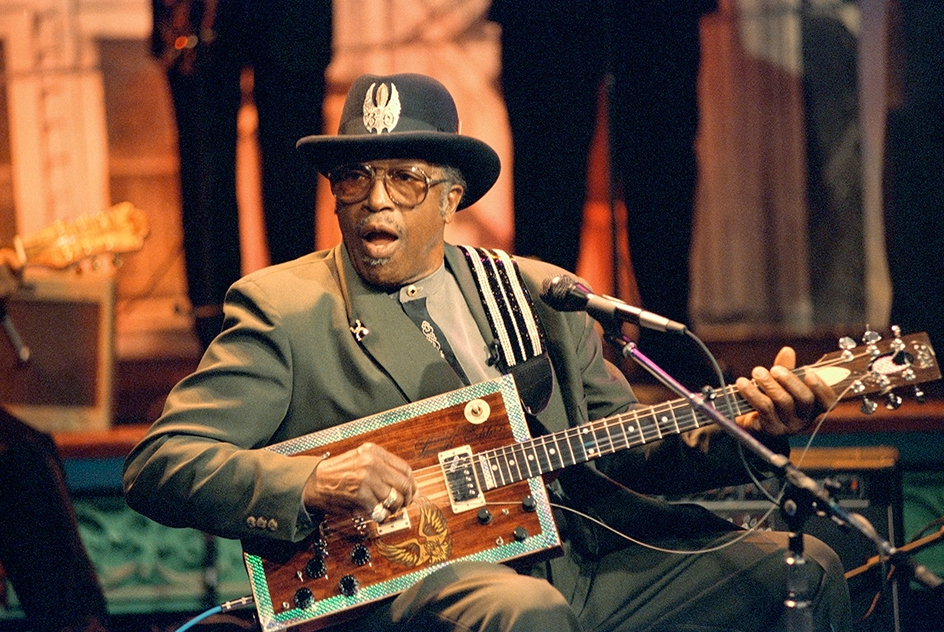
The first generation
of rock ‘n’ roll artists were led by Presley and five other male performers—Chuck Berry, Little Richard, Bo Diddley, Fats Domino, and Jerry Lee Lewis. These artists appealed to black and white audiences alike, but only Presley and Lewis were white.
Chuck Berry
was one of rock’s first great songwriters. His songs, aimed at teenagers, combined his lyrics with a squawking guitar and pounding rhythm. Such songs as “Maybellene” (1955); “School Day (Ring! Ring! Goes the Bell)” (also known as “School Days,” 1957); and “Sweet Little Sixteen” (1958) deal with themes that include cars, young love, and the frustrations of adolescence. Berry often said that his goal was to bridge the gap between races by focusing his songs on topics important to young people regardless of their race.
Little Richard
was steeped in the rich tradition of black gospel music. But he had also played piano in striptease clubs, learning a sexier style of music. Little Richard’s recordings in New Orleans for Specialty Records remain some of the most energetic records in rock history. They include “Tutti Frutti” (1955), “Long Tall Sally” (1956), “Rip It Up” (1956), and “Good Golly, Miss Molly” (1958).
Bo Diddley
recorded for Chess Records beginning in 1955, issuing such hits as “Bo Diddley” (1955) and “Say Man” (1959). He used a guitar as a percussion instrument, and his characteristic pounding beat would influence rock bands for decades.
Fats Domino
played piano with a driving rhythm and sang vocals in a rich voice that had mass appeal for white teenagers. Domino began his career in rhythm and blues. He sold more records in the 1950’s than any recording artist except Elvis Presley, beginning with his first pop music hit, “Ain’t That a Shame” (1955).
Jerry Lee Lewis
performed with great energy and excitement both as singer and pianist. Lewis recorded a pair of rock classics for Sun Records in 1957, “Whole Lotta Shakin’ Goin’ On” and “Great Balls of Fire.” Lewis created controversy in 1958 when he married his 13-year-old cousin, damaging his career for several years.
A variety of styles
of rock ‘n’ roll emerged in the 1950’s. One was the blend of country music (often called hillbilly music) and rhythm and blues popularized by Presley. It became known as rockabilly. Some rockabilly artists, such as Bill Haley and Buddy Holly, were former country music singers who altered their style slightly to succeed in the rock ‘n’ roll market. Haley had formed a band called Bill Haley and the Saddlemen that played Western swing, which combined country music with big-band jazz music. But after hearing Joe Turner and other rhythm and blues artists, he recorded rock music’s first huge hit, “Rock Around the Clock” (1954), with his band, then called the Comets.

An African American vocal style known as doo-wop emerged from the streets of New York City and Philadelphia. Doo-wop, with its smooth harmonies, was the closest rock style to mainstream pop in the mid-1950’s. The Orioles helped develop the doo-wop sound with their hits “It’s Too Soon to Know” (1948) and “Crying in the Chapel” (1953). Other important African American doo-wop groups included the Coasters, the Drifters, the Moonglows, and the Platters. The style spread to white singing groups, such as the Capris, Dion and the Belmonts, the Earls, and the Tokens. These were all-male groups, but some “girl groups”—that is, vocal groups of young women—succeeded in the doo-wop style, notably the Chantels, the Chiffons, and the Shirelles.
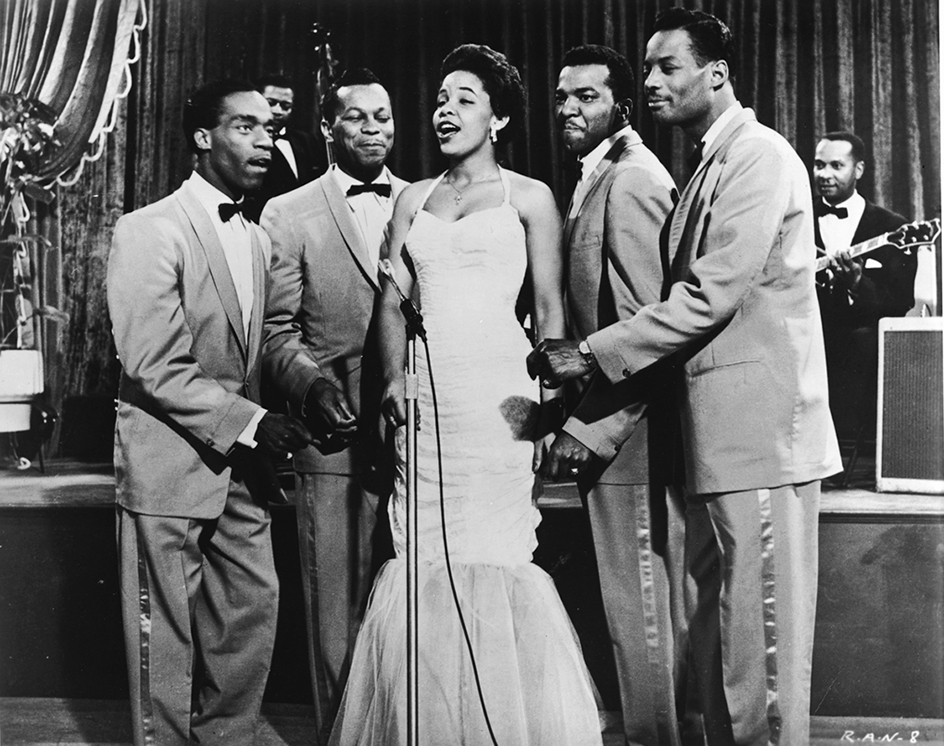
Many early rock ’n’ roll songs were about certain dances, some being created by the song’s composer. Hank Ballard’s “The Twist,” later recorded with greater success by Chubby Checker, was perhaps the most successful of these songs. Other songs of the late 1950’s and the early 1960’s were composed to create or perpetuate such dances as the Dog, the Funky Chicken, the Limbo Rock, the Stroll, and the Walk.
Loading the player...Rock music: Doo-wop
The major record companies, which had ignored rock ‘n’ roll at first, recognized the music’s potential. The mainstream music industry rushed to create teenage idols. These young recording artists, all white, included Paul Anka, Frankie Avalon, Fabian, Connie Francis, Brenda Lee, and Ricky Nelson. Music publishing houses recruited young songwriters just out of high school, such as Neil Diamond, Carole King, and Neil Sedaka, to write songs for the youth audience.
The practice of white singers “covering”—that is, performing their own versions of—records by black artists was widespread throughout the early years of rock ‘n’ roll. For example, white mainstream singer Pat Boone re-recorded Little Richard’s “Tutti Frutti” and “Long Tall Sally,” Joe Turner’s “Chains of Love,” and Fats Domino’s “Ain’t That a Shame.” Boone’s “cover” versions cut into sales of the originals, costing the original artists money.
Setbacks.
A number of setbacks hit rock music in the late 1950’s and early 1960’s. Little Richard left music and went into the ministry. Elvis Presley was drafted and served two years in the United States Army. Three important performers, Buddy Holly, Ritchie Valens, and J. P. Richardson (the Big Bopper), were killed in a 1959 airplane crash. The next year, singer Eddie Cochran died in an automobile accident that injured singer Gene Vincent. Chuck Berry went to prison in 1962, convicted of violating the Mann Act (transporting a minor across state lines for immoral purposes).
In 1960, Alan Freed was charged with taking money from record executives to play their recordings on his show. The press called the scandal “payola.” In 1962, Freed pleaded guilty to two counts of commercial bribery. The scandal and legal battle effectively ended Freed’s career.
Independent producers
brought strong creative drives to rock ‘n’ roll during its early years. Perhaps the first superstar record producer was Phil Spector. He founded the record label Philles Records with producer Lester Sill in 1961. Spector specialized in girl groups, such as the Crystals and the Ronettes. He backed up their singing with what he called his “wall of sound,” which consisted of blended recordings of multiple guitars, drums, and other instruments. Spector also recorded the Righteous Brothers, a popular singing duo consisting of Bill Medley and Bobby Hatfield.
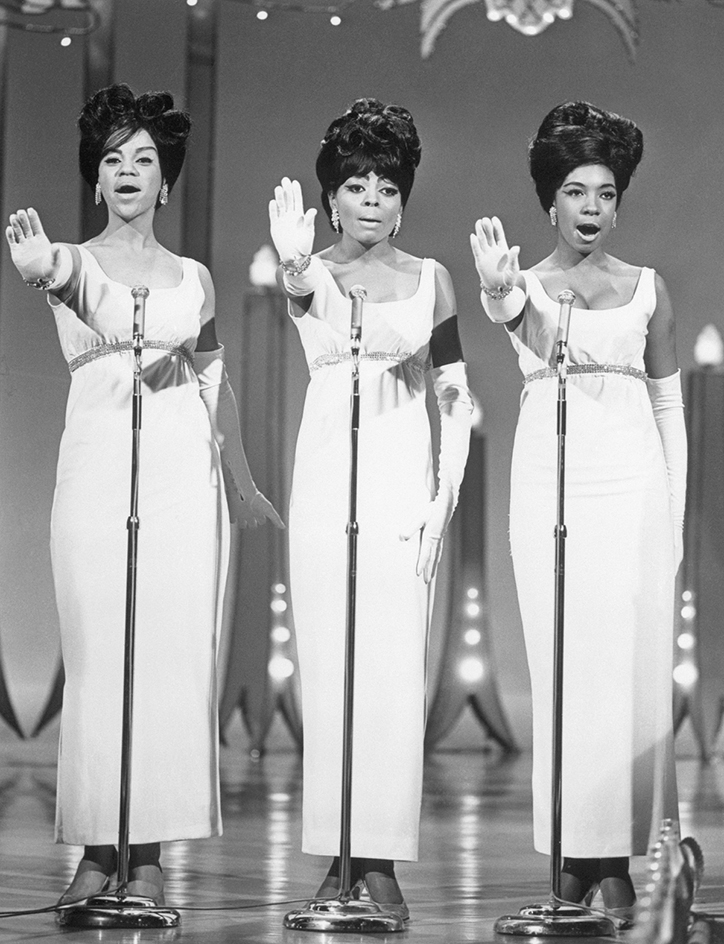
In 1959, Berry Gordy, Jr., founded Motown Records in Detroit, which developed into the Motown Record Corporation in 1961. Gordy built Motown into a musical empire, recording such stars as Marvin Gaye, the Jackson Five, the Temptations, Smokey Robinson, Diana Ross and the Supremes, Mary Wells, and Stevie Wonder.
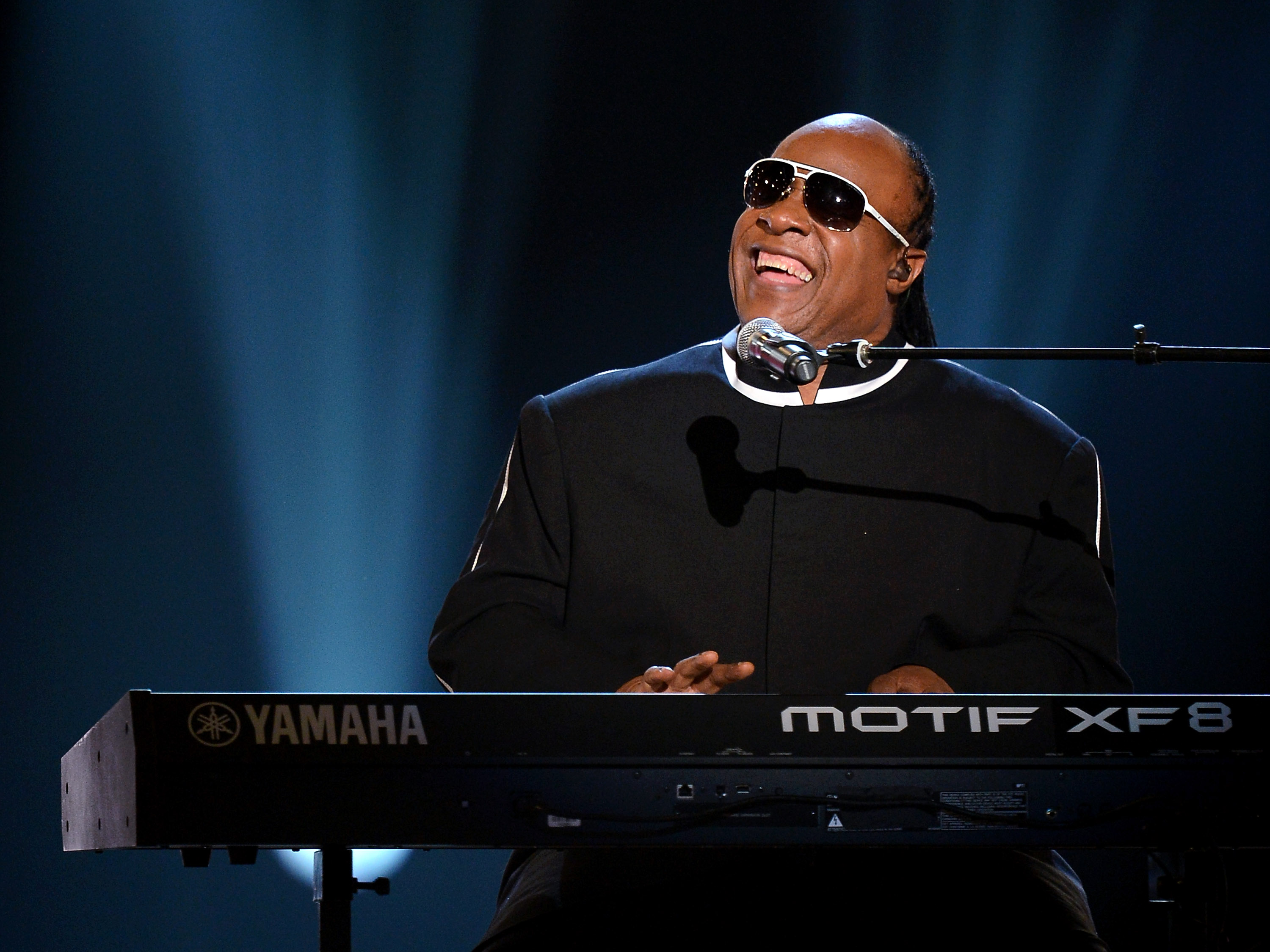
Brian Wilson was another record producer. Unlike Spector and Gordy, he had a major performing career in addition to producing records. Wilson was a member of the Beach Boys, one of the most popular white singing groups of the 1960’s. Most of Wilson’s material depicted an ideal teenage world centered in California. This world was filled with youthful romance, surfing, and fast cars. He created a complex harmonic blend in such songs as “Surfer Girl” (1963) and “I Get Around” (1964).
Wilson produced the Beach Boys’ album Pet Sounds (1966), which set a new standard for experimentation and sophistication in the recording studio. He gave the album layer upon layer of instruments and vocals to create a rich, symphonic sound.
The British invasion
In 1964, the arrival in the United States of the Beatles from England brought a rebirth to rock ‘n’ roll, now often called simply rock. The Beatles’ appearance in the United States launched the visits of dozens of British rock bands that became known as the “British invasion.” British acts dominated the American charts of best-selling records.
The Beatles
Loading the player...
The Beatles: Beatlemania
were a quartet consisting of George Harrison, John Lennon, Paul McCartney, and Ringo Starr. They came from Liverpool, an English port city where American music had a big influence. British sailors brought American rock ‘n’ roll records home through Liverpool, and the city’s nightclubs and concert halls featured groups that accented a strong beat in the American style.
By the early 1960’s, the Beatles had perfected their version of rock ‘n’ roll through appearances in British and German bars. Under the guidance of Brian Epstein, their manager, and the record producer George Martin, the group became hugely successful in the United Kingdom in 1963. When the Beatles brought their act to the United States the next year, they caused a sensation.
The Beatles were actually reinterpreting American rock ‘n’ roll from the 1950’s. Their performances and recordings included songs by Chuck Berry, Buddy Holly, Carl Perkins, Little Richard, and other early stars. Lennon and McCartney soon began writing songs, and many of their compositions paid tribute to these early influences. Lennon and McCartney became one of the most successful songwriting teams in music history.
The Rolling Stones,

The Rolling Stones formed in London in 1962. The quintet was led by singer Mick Jagger. Jagger and guitarist Keith Richards formed a songwriting partnership. Their aggressive, rebellious style can be heard in such rock classics as “(I Can’t Get No) Satisfaction” (1965), “Sympathy for the Devil” (1968), and “Honky Tonk Women” (1969). The Stones rank among the most enduring rock groups. The band, still led by Jagger and Richards, continued to perform into the 2000’s.
The Who
ranked with the Rolling Stones among the top British rock bands expressing the dissatisfaction of young people. The quartet featured the songwriting of guitarist Pete Townshend. His song “My Generation” (1965) is a classic rock expression of youthful alienation. Townshend and The Who created the first successful rock opera, the 90-minute Tommy (1969). The work began as an album and has been performed many times live. It was also made into a motion picture in 1975 and was produced on Broadway in 1993.
Other British groups
followed the Beatles and the Rolling Stones and filled American music charts with their songs. They included the Animals, the Dave Clark Five, Gerry and the Pacemakers, Herman’s Hermits, the Hollies (named for Buddy Holly), the Kinks, Manfred Mann, and the Moody Blues.
The British groups were rooted in American music, which led listeners to rediscover such American originals as Chuck Berry, Little Richard, and Carl Perkins. But the sheer force of the British invasion ended a number of American music careers.
New styles and sounds
The 1960’s became a time of peak creativity for rock music, which earned wide respect as a legitimate art form. Rock blossomed into many new styles and sounds. By the mid-1960’s, rock music had become the dominant form of popular music.
Bob Dylan
was a singer-songwriter who had emerged as part of a folk music boom in the United States during the early 1960’s. At first, Dylan played his music on acoustic (nonelectric) instruments and wrote ballads calling for social change, such as “Blowin’ in the Wind” (1963) and “The Times They Are A-Changin’ ” (1964). Then Dylan began playing his material on electric guitar with the classic rock ‘n’ roll accompaniment of amplified instruments. Many of his original fans rejected the new style, which he introduced at the Newport Folk Festival in 1965. But radio listeners were attracted to his new music.
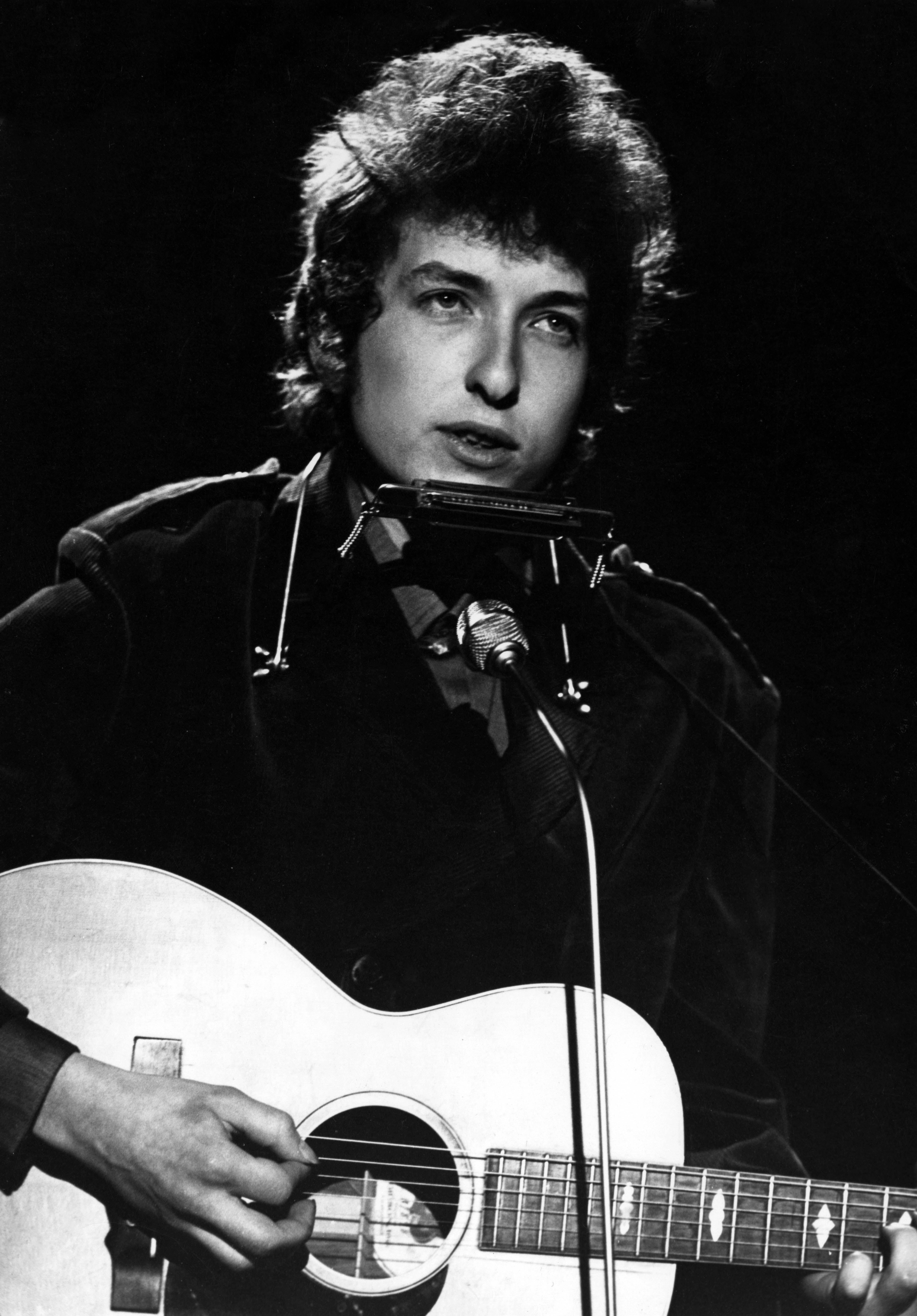
Dylan’s poetic lyrics set to a rock beat produced a style known as folk rock, which developed in the mid- 1960’s. Soon other rock groups were recording Dylan songs, such as “Mr. Tambourine Man” (1965) by the Byrds. Other American artists who played folk rock included the Turtles, the Mamas and the Papas, the Lovin’ Spoonful, and the team of Paul Simon and Art Garfunkel.
Fresh directions.
Many prominent musicians of the 1960’s returned to rock ‘n’ roll’s early years for inspiration. The muted guitar, bass, and drum music on Bob Dylan’s album John Wesley Harding (1968) reflected the instrumentation of the early Elvis Presley recordings. The Byrds produced a country rock album called Sweetheart of the Rodeo (1968), exploring rock’s roots in country music. Country rock remained popular during the 1970’s. Such artists as the Eagles and Linda Ronstadt combined elements of rock and country music in their recordings.
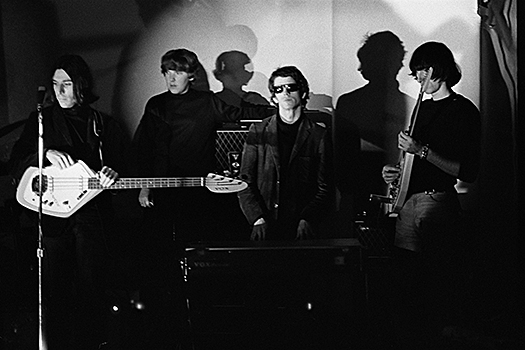
The Beach Boys recorded a tribute to rhythm and blues in the album Wild Honey (1967). The British musicians John Mayall and Eric Clapton schooled themselves in the blues of Robert Johnson. Mayall’s Bluesbreakers and Clapton’s group Cream played heavily improvised blues rock. The American group the Doors established a dark, brooding blues rock style with their first album, The Doors (1967), and its hit single “Light My Fire.”
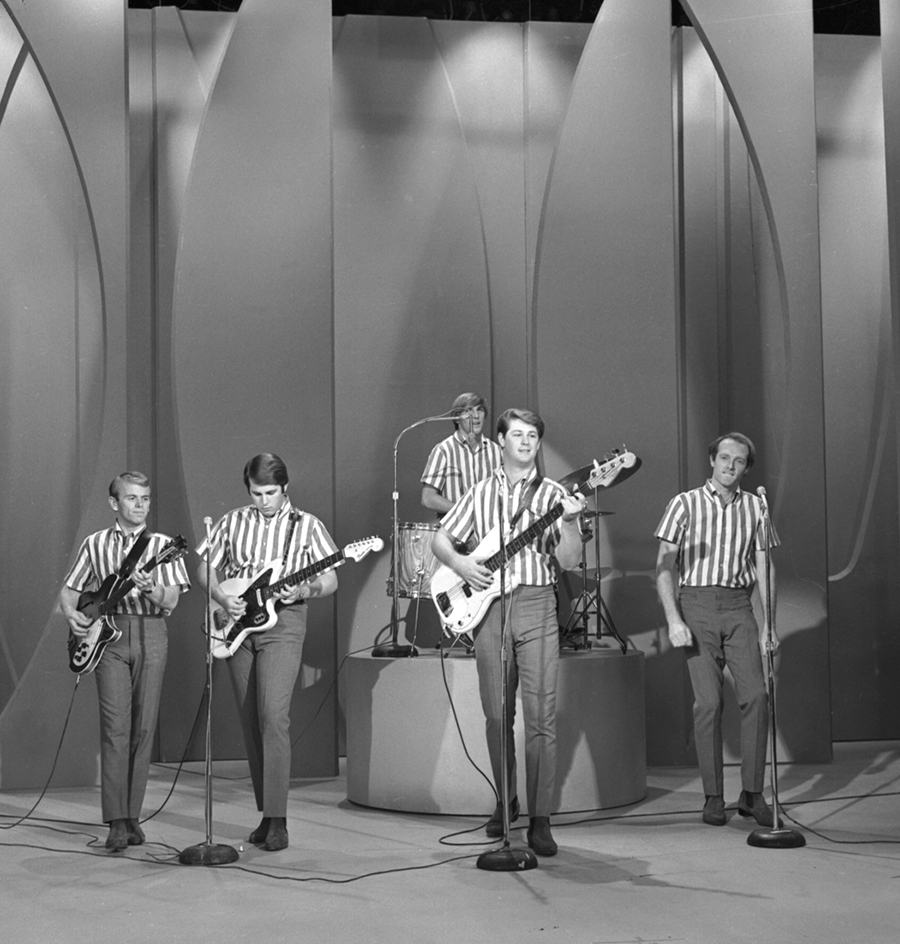
Many rock artists brought diversity and experimentation to their music. The Beatles left behind the simple love songs of their early days and recorded the more personal album Rubber Soul (1965). The Beatles’ famous album Sgt. Pepper’s Lonely Hearts Club Band (1967) was a song cycle with sound effects that were elaborate for the time. The Byrds’ album The Notorious Byrd Brothers (1968) featured electronic instruments called synthesizers to combine, modify, and distort sounds. The Rolling Stones answered the Sgt. Pepper album with startling new music in Their Satanic Majesties Request (1967).
In 1968, the rock musical Hair opened on Broadway. Created by Galt MacDermot, James Rado, and Gerome Ragni, the show generated controversy with its use of profanity and nudity, its sympathetic view of sex and drugs, and its antiwar attitude during the Vietnam War (1957-1975). But Hair gained international popularity and established rock music as a legitimate sound for the musical theater.
Psychedelic rock,
Loading the player...
Rock music: Psychedelic rock
also called acid rock, attempted to re-create the mind-altering effects of LSD and other drugs through music. Many psychedelic rock performances featured light shows and other special effects and deliberate use of feedback. Feedback is the sound distortion created when a microphone or electric guitar picks up sound from an amplifier and sends it back through that amplifier.
Garage rock
was another style that emerged in the 1960’s. Garage rock emphasized crude or raw compositions with an unfinished and improvised sound rather than the polished sound of studio recordings. The name comes from some bands’ practice of rehearsing in garages. The roots of garage rock can be heard in such songs as “Louie Louie” (1963) by the Kingsmen. Later examples include “96 Tears” (1966) by Question Mark and the Mysterians, “Pushin’ Too Hard” (1966) by the Seeds, and “Dirty Water” (1966) by the Standells.
Bubblegum music
was at the other end of the musical spectrum from garage rock in the 1960’s. Bubblegum music focused on up-tempo, cheery songs. Many bubblegum artists recorded for the independent Buddah label, producing such hits as “Simon Says” and “1, 2, 3 Red Light” (both 1968) by the 1910 Fruitgum Company and “Yummy Yummy Yummy” (1968) by the Ohio Express. Elements of bubblegum music remained popular for decades and fed the careers of such artists as the Osmonds, the Jackson Five, Bobby Sherman, David Cassidy, and the Partridge Family.
The San Francisco scene.
San Francisco became the new center of more serious rock music in the mid-1960’s. Many psychedelic rock groups originated in San Francisco, including the Grateful Dead, Jefferson Airplane, and Big Brother and the Holding Company, which briefly featured Janis Joplin as its lead singer. The devoted fans of the Grateful Dead, called Deadheads, filled stadiums and concert halls wherever the group appeared. The Grateful Dead disbanded with the death of its leader, guitarist Jerry Garcia, in 1995.
The heavy metal sound
Loading the player...
Rock music: Heavy metal
combined screaming guitars and crashing drums with dramatic vocals. The American guitarist Jimi Hendrix was a strong influence on the heavy metal sound. Hendrix became a celebrated rock guitarist with his flashy performing style, but he was also respected for his technical skill. Early in his career, Hendrix played and toured with many famous performers, including Little Richard. Hendrix gained fame after he moved to London and issued his first major recording, Are You Experienced? (1967). His band, the Jimi Hendrix Experience, exploited heavily amplified guitar and bass to produce an avalanche of sound.
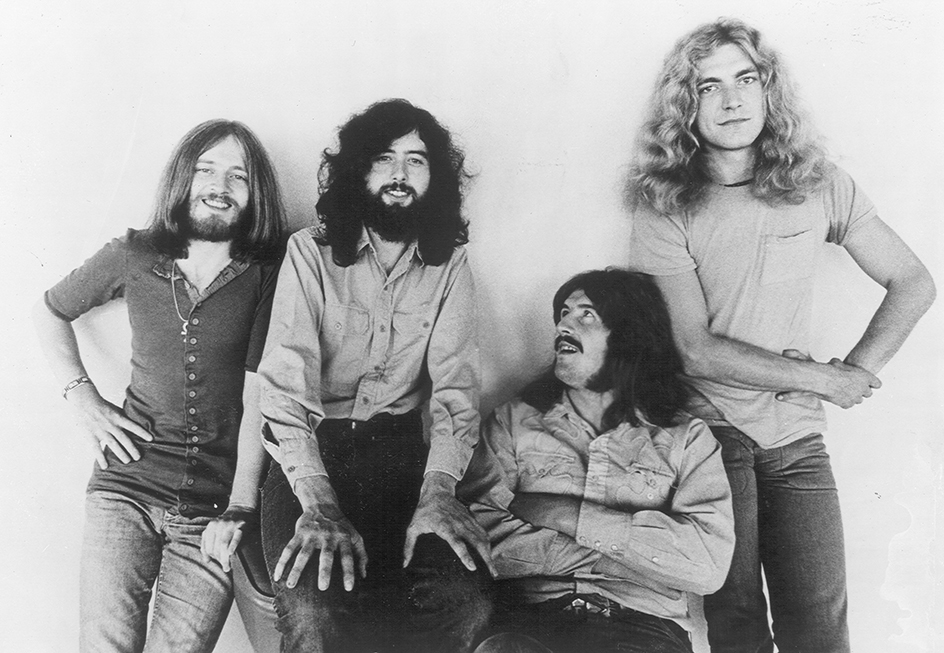
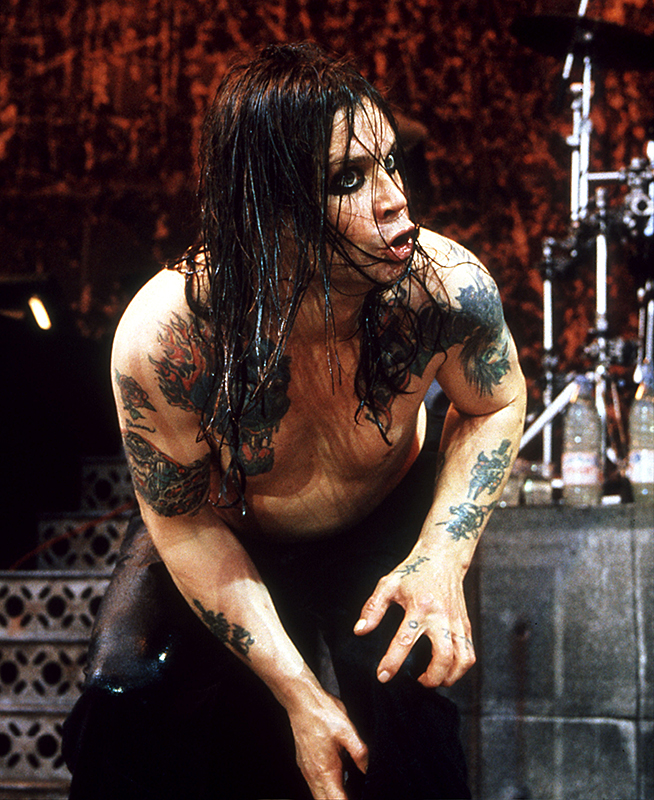
Soul music.
Perhaps the most significant development of the late 1960’s was the success of soul music, which was recorded primarily by black artists. Soul music developed from gospel music and the blues, but it had a smoother sound. The singer Sam Cooke launched the style, but he was shot to death in 1964 and did not live to see the success of the music he pioneered.
James Brown was the first major soul singer to cross over to a mass audience, with “Papa’s Got a Brand New Bag” (1965). Brown concentrated purely on rhythm, discarding melody altogether. Like Brown, such soul artists as Aretha Franklin, Wilson Pickett, and Otis Redding gained a following among both blacks and whites.
Atlantic Records had long been the home to some of the country’s greatest rhythm and blues and soul music. Its executives, Ahmet Ertegun and Jerry Wexler, made an alliance with the Stax label, an independent company in Memphis. Atlantic gave wide distribution to Stax recordings. The studio band at Stax, known as Booker T. and the MG’s, performed on classic songs by such Memphis soul artists as Pickett, Redding, Carla Thomas, Eddie Floyd, and Sam and Dave.
The small town of Muscle Shoals, Alabama, also became a recording center. In the tiny Fame Studios, Wexler produced Aretha Franklin’s first recordings for Atlantic. Pickett, Percy Sledge, and the Staples Singers also recorded in Muscle Shoals.
By the 1970’s, soul music achieved a slicker sound, driven by recordings produced by Kenny Gamble and Leon Huff in Philadelphia. They recorded hits by such artists as Harold Melvin & the Bluenotes, the Spinners, and the O’Jays.
Outdoor rock festivals

In the autumn of 1969, an attempt to create a “Woodstock West” festival was staged at Altamont, California, headlined by the Rolling Stones. The Hell’s Angels motorcycle gang provided concert security. After one fan was stabbed to death in front of the stage, Altamont came to symbolize the dark side of rock music. Outdoor festivals continued to be popular into the early 2000’s, though some were marked by violence.
The 1970’s
During the 1970’s, the popularity of rock music spread among older as well as younger listeners, extending from preteens to middle-aged adults. As the audience for rock grew, a variety of new musical styles emerged.
The early 1970’s
were turbulent years in rock music. The Beatles broke up in 1970. A number of drug-related deaths shook the music world, including the deaths of Hendrix and Joplin in 1970; and Jim Morrison, the lead singer and lyricist of the Doors, in 1971.
By the early 1970’s, rock performers achieved a level of fame rarely gained by previous musicians. The British singer and songwriter David Bowie described the ascent and decline of a rock star from outer space in his album The Rise and Fall of Ziggy Stardust and the Spiders from Mars (1972).
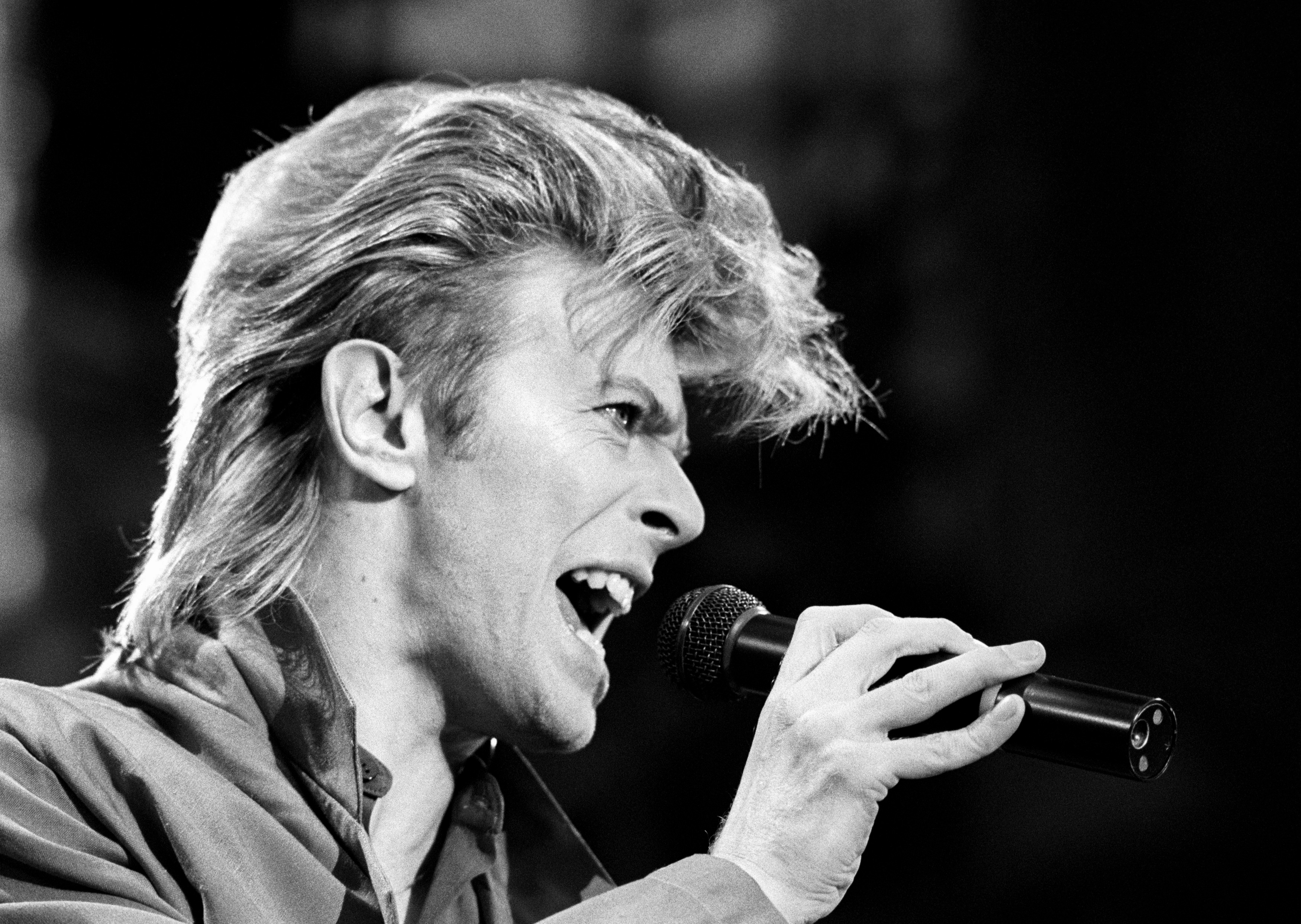
The success of Hair and The Who’s rock opera Tommy opened the way for extended works for the stage by other rock composers. They included Godspell (1971) by Stephen Schwartz; Jesus Christ Superstar (1971) by Andrew Lloyd Webber and Tim Rice; and Grease (1972) by Warren Casey and Jim Jacobs.
The popularity of Grease, with its songs based on music of the 1950’s, showed rock beginning to embrace its history. There was a revival of interest in early rock ‘n’ roll, restarting the careers of Chuck Berry, Little Richard, and Jerry Lee Lewis, among others. Many artists of the 1970’s, including John Lennon and Paul McCartney, recorded their interpretations of rock “oldies.”
Progressive rock,
also called art rock, was an attempt to combine rock with elements of classical music, jazz, and other forms of music. One of the most influential progressive rock bands was the British group Pink Floyd. The group’s 1973 album The Dark Side of the Moon became one of the most popular recordings in rock history. Other progressive rock groups—all from the United Kingdom—included Genesis, Jethro Tull, Yes, and the trio Emerson, Lake and Palmer.
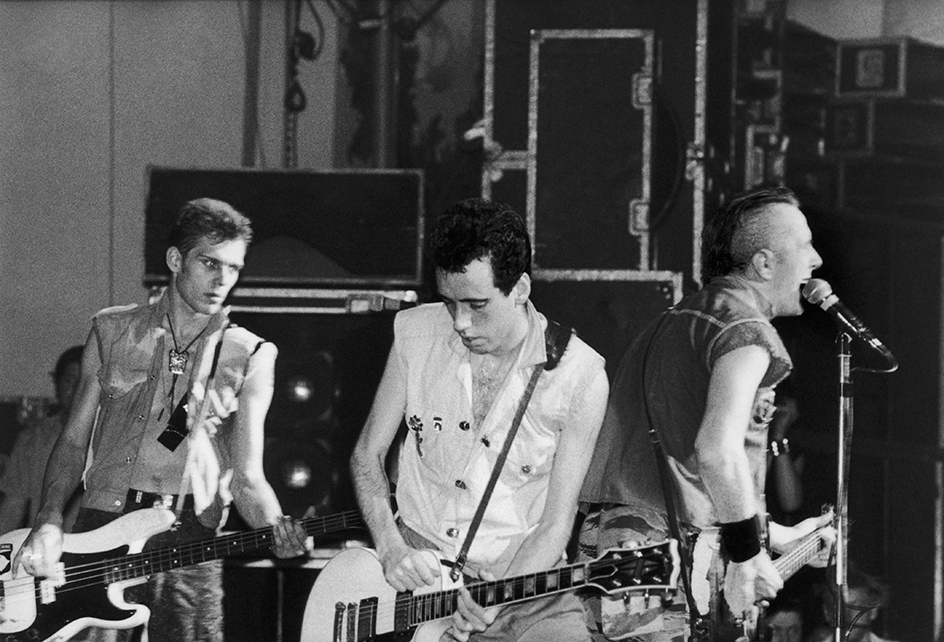
Punk rock
was simpler, faster, louder, and more energetic than mainstream rock. It developed primarily in two cities, New York City and London. The movement was led in New York City by such bands as the Ramones, Television, and the Patti Smith Group, and in London by the Sex Pistols, the Clash, and many others. The punk rockers brought an angry, rebellious attitude unseen since the early days of rock ‘n’ roll. The punk bands were emotional and some of them—particularly the Sex Pistols—deliberately tried to offend audiences with their use of profanity and their rejection of mainstream values and lifestyles.
Loading the player...Rock music: Punk
New wave.
By the end of the 1970’s, the influence of the punks had led to a more commercial brand of rock called new wave. The anger of the punks was present, but somewhat softened, in the new wave. Important new wave artists included the English singer-songwriter Elvis Costello, the British band the Cure, and the New York City band Talking Heads, led by the singer and guitarist David Byrne. The new wave group the Cars achieved quick success with their first two albums, The Cars (1978) and Candy-O (1979).
Loading the player...Rock music: New wave
Disco
was a rhythmic style that arrived in the late 1970’s. In disco music, a steady dance beat was primary, and lyrics were of secondary importance. The motion picture Saturday Night Fever (1977), with its best-selling sound track by the Bee Gees, popularized disco. The Bee Gees were a trio of English brothers—Barry, Maurice, and Robin Gibb—who began their music careers in Australia. Other disco stars included the American singer Donna Summer and the Swedish quartet ABBA.
Loading the player...Rock music: Disco
Disco was partly a product of the smooth soul music from Philadelphia produced by Kenny Gamble and Leon Huff. But several of the first disco hits rose from independent studios, some of them in Miami, with such songs as “Rock the Boat” (1974) by the Hues Corporation and “Rock Your Baby” (1974) by George McCrae. As with the music of the doo-wop groups, disco was intended for dancing. Several rock artists tried to revive their careers with disco-influenced songs. The most notable was Rod Stewart with “Da Ya Think I’m Sexy?” (1978). However, traditional rock fans strongly rejected disco.
The 1980’s
A new element was introduced into rock music in the 1980’s—the video. New wave music still dominated the rock music charts as the 1980’s began. Rock drew strength from international musical influences, and rap music found wide acceptance.
Rock videos and MTV.
A cable television channel called MTV (short for Music Television) debuted in 1981, running 24 hours a day. Its initial programming consisted of short promotional films for songs and albums, called videos. Such films had been a part of popular music for many years. The Beatles and Bob Dylan had made memorable promotional clips for songs in the 1960’s. However, with the advent of MTV, videos became a requirement for success. Many early stars of MTV, such as the British group Duran Duran and the American group Huey Lewis and the News, succeeded largely because of the style and creativity of their videos.
Many established artists, including the American bands Van Halen and ZZ Top, reached new levels of stardom through their videos. Bruce Springsteen solidified his position as one of rock’s greatest stars with his best-selling album Born in the U.S.A. (1984). Springsteen made his first videos for this album’s singles, including the hit “Dancing in the Dark.” Another artist who made compelling videos was Prince. MTV’s airing of Prince’s video “Little Red Corvette” helped make the song and its album, 1999 (1982), a major hit. Prince became one of the top stars of the 1980’s with his album and motion picture Purple Rain (1984).
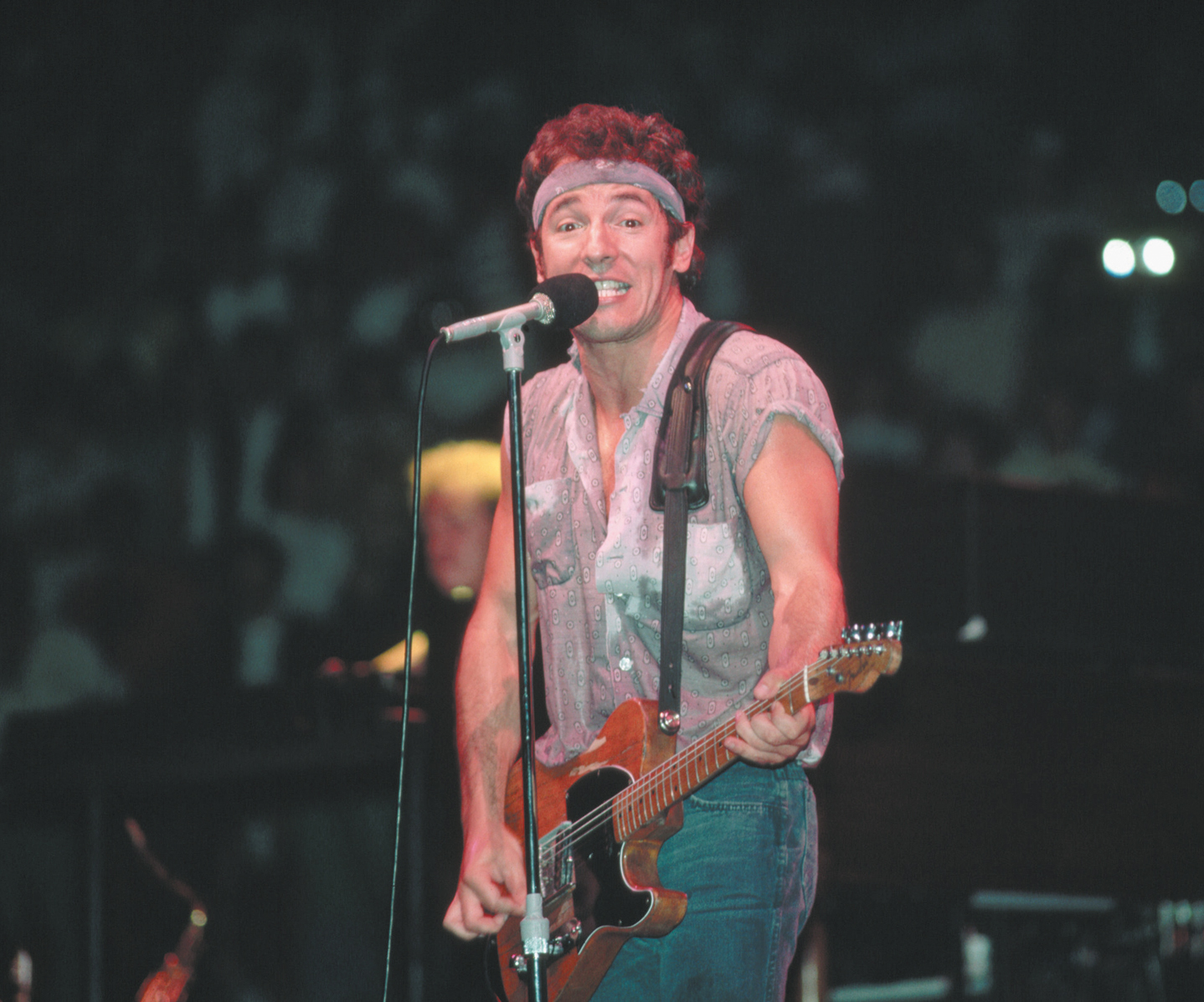
Madonna and Michael Jackson.
Perhaps the first MTV-created rock superstar was Madonna, a dancer and singer whose sexuality dominated her cable TV appearances. Her album Like a Virgin (1984), with several hit singles including “Material Girl,” helped make her a huge star.
Michael Jackson spent his childhood performing with his family band, the Jackson Five. Jackson found stardom as an adult with his best-selling albums Off the Wall (1979) and Thriller (1982). Thriller was the world’s best-selling album for decades, until Their Greatest Hits 1971-1975 (1976) by the American rock band the Eagles surpassed it in 2018. The music video of the song “Thriller” is a 13-minute horror film that combines singing and dancing with spectacular visual and sound effects. Jackson also had hits with his dance-heavy videos “Billie Jean” and “Beat It” (both 1983).
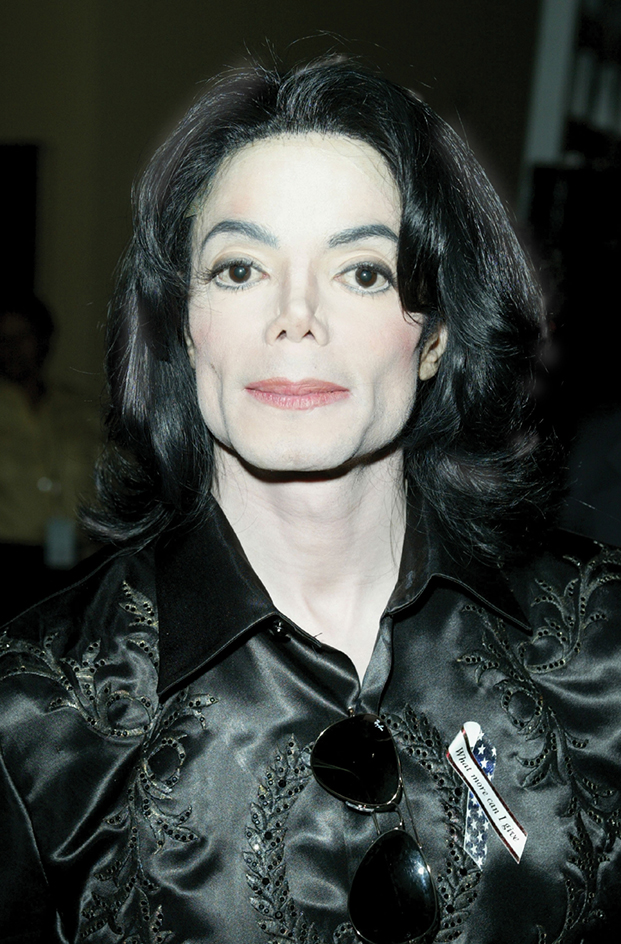
New wave and mainstream rock
remained influential. The American group the B-52’s and the British group New Order blended new wave elements with dance music. The Police, a new wave group with British and American members, recorded the best-selling albums Ghost in the Machine (1981) and Synchronicity (1983). Synchronicity included the hit “Every Breath You Take” by the group’s lead singer, Sting, who later had a successful solo career. Talking Heads starred in the successful film Stop Making Sense (1984), a documentary based on their 1983 concert tour.

U2, a mainstream rock group from Ireland, gained international popularity in the 1980’s. Their 1987 album The Joshua Tree sold millions of copies worldwide.
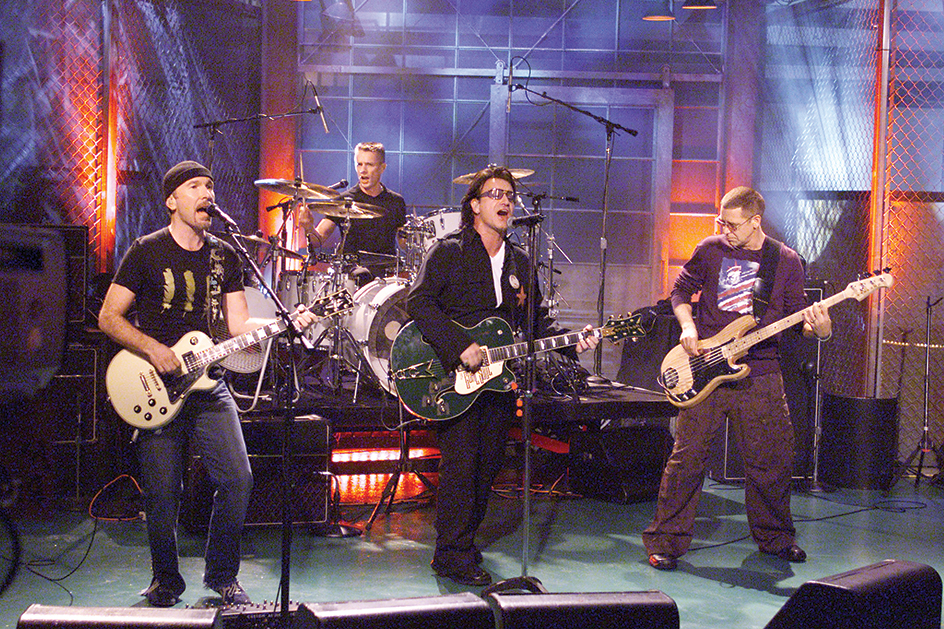
The American rock group R.E.M. also gained widespread popularity. R.E.M. incorporated influences ranging from folk rock to punk and new wave music. Many heavy metal bands became popular during the 1980’s, including the American groups Bon Jovi, Guns n’ Roses, and Mötley Crüe, and the British band Def Leppard. Bon Jovi’s Slippery When Wet (1986) became one of the best-selling albums of the 1980’s.
World music,
a combination of rock and music from other cultures, gained popularity with a large part of the rock audience. Rock artists looked outside American and European culture for other musical influences.
The English rocker Peter Gabriel, a former lead singer of Genesis, and David Byrne, the Scottish-born vocalist of Talking Heads, grafted African, Latin American, and Middle Eastern elements onto traditional rock. Reggae, a simple, pulsing form of rock that originated in the Caribbean, spread internationally. The passionate reggae music of Bob Marley of Jamaica became especially popular, even after Marley’s death in 1981. The South African vocal group Ladysmith Black Mambazo participated in Paul Simon’s 1986 Graceland album, a celebration of world music and its influence on rock ‘n’ roll.
Rap
is an African American form of rock that is spoken or chanted, rather than sung. Early rock artists such as Bo Diddley had used elements of rap in music of the 1950’s, but modern rap traces its origins to the streets of New York City in the 1970’s. Rap’s roots could also be heard in Jamaican music, where nightclub disc jockeys talked over the records they played. The talk was called toasting.
Loading the player...Earlier rap music
The Sugar Hill Gang scored the first major rap hit with “Rapper’s Delight” (1979). Recordings by Kurtis Blow in the 1980’s also found wide acceptance. Perhaps the first rap super group was Run-D.M.C. Its 1984 album Run-D.M.C. was the first rap gold record. The group collaborated with two members of the rock band Aerosmith on a remake of Aerosmith’s hit “Walk This Way” (1986).
Public Enemy became one of the most influential and controversial rap groups of the 1980’s. Many of its raps dealt with racism and other social problems.
Early rap albums were issued by independent labels. By the end of the 1980’s, such major labels as Columbia and Warner Bros. were recording rap music.
Rap remained a vigorous offshoot of rock music in the 1990’s and early 2000’s. With his band, Body Count, the rap star Ice-T recorded the album Body Count (1992), a blend of rap and heavy metal rock. The album featured a track called “Cop Killer” and dealt with murdering police officers. Outraged parents and public officials boycotted the album and put pressure on the record company, Warner Bros. In response, Warner eventually cut “Cop Killer” from the album.
The 1990’s
A style called teen pop dominated rock music during much of the 1990’s. Artists on the fringes of mainstream rock music also brought new life to rock.
Teen pop,
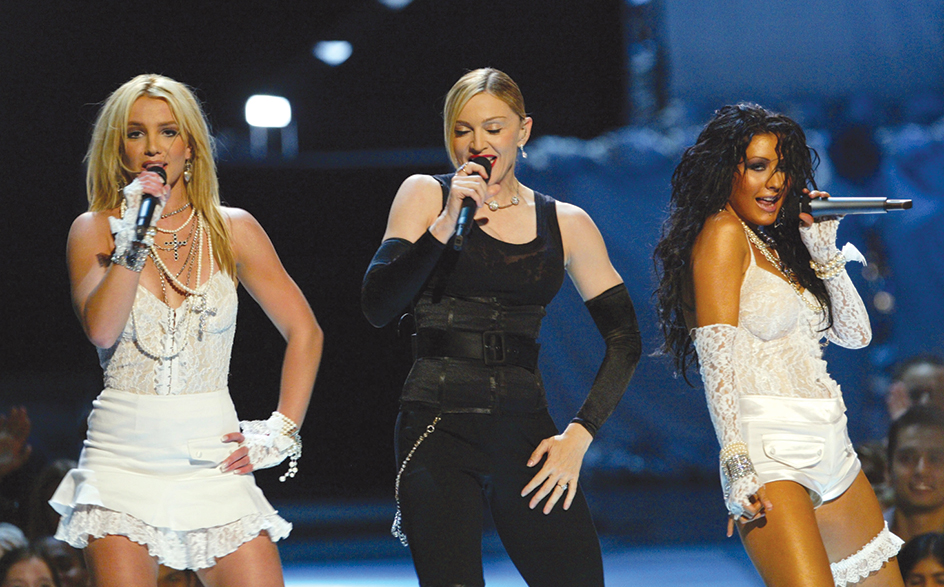
Alternative rock.
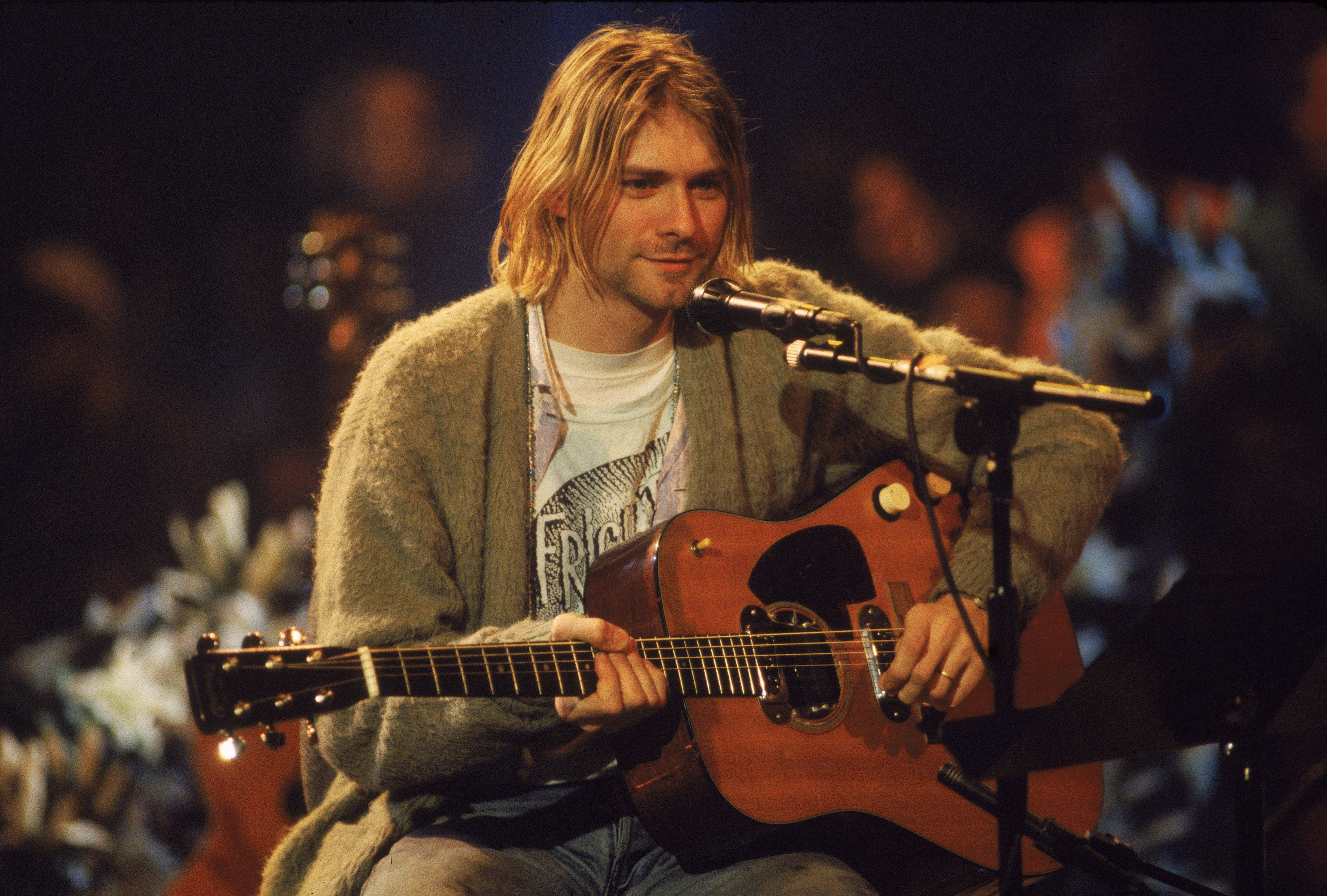
Alternative rock found a wide audience through such bands as Nirvana, Pearl Jam, and Soundgarden, all originating in Seattle. They played a forceful style of rock with an angry, rebellious message. The press called it grunge rock. Nirvana, the first grunge group to reach a wide audience, exploded onto the music scene with their second album, Nevermind (1991). A hit video for the album’s single “Smells Like Teen Spirit” helped Nirvana gain a huge following. The group broke up in 1994 after its lead vocalist, Kurt Cobain, died by suicide.
Nine Inch Nails, an American alternative rock group, mixed angry rock songs with heavy metal and synthesized electronic music. Other alternative rock groups that originated in the 1990’s included the American bands Green Day, who were influenced by the punk rockers of the late 1970’s; and No Doubt, who incorporated Jamaican popular music called ska into their sound. The Prodigy, a British group, combined aggressive messages with a hard-driving dance beat. Oasis, another British group, showed the influence of the Beatles in their melodies and harmonizing vocals.
Rock music today
Today, rock music takes many forms. Rock is so dominant that it can be defined as whatever music is played on popular radio stations. Some stations play soft rock, which is rock music that is slow and quiet. Others concentrate on older rock of the 1960’s, 1970’s, and 1980’s, often called classic rock. Still other stations focus on rap, or on alternative rock.
Rap music remains popular. Most leading rap artists, such as Kanye West, Jay-Z, and Nelly, are black, but a few white rappers have emerged, notably Eminem.
Traditional rock maintains a foothold in the marketplace. The Rolling Stones and U2 remain huge concert draws decades after they first appeared on the rock scene. Such artists as Eric Clapton, Bob Dylan, Paul McCartney, and Bruce Springsteen also continue to tour.
Alternative rock artists continue to provide some of the most creative and stimulating rock music today. The American electronic artist Moby combines, mixes, and distorts recordings of rock and other music. Another American, Beck, mixes influences from folk, soul, rap, and other types of music. Significant alternative rock groups include the British band Radiohead, who create futuristic electronic rhythms while retaining elements of traditional rock; and the American band Wilco, who blend folk and country songwriting styles with modern rock and electronic sounds. 